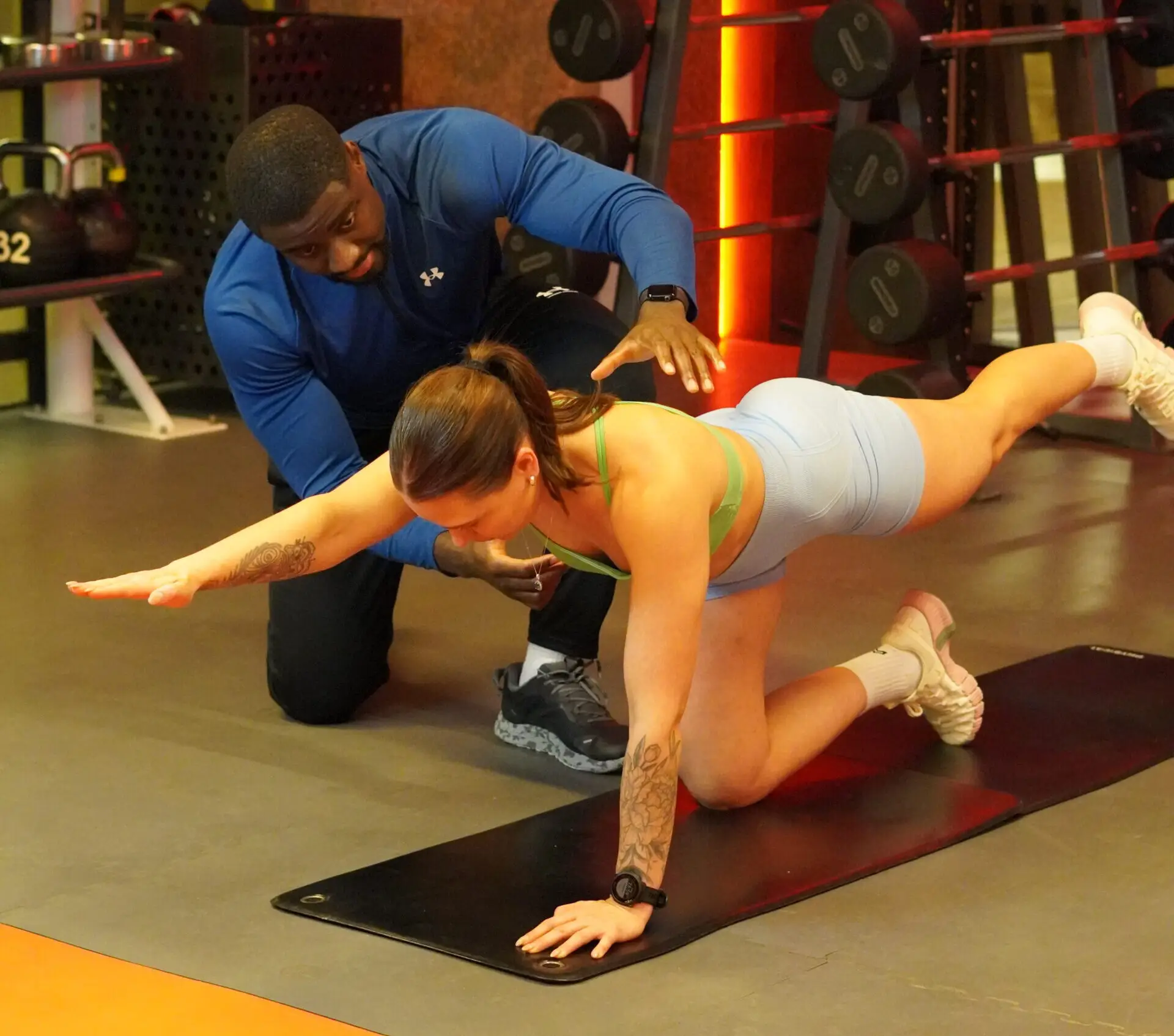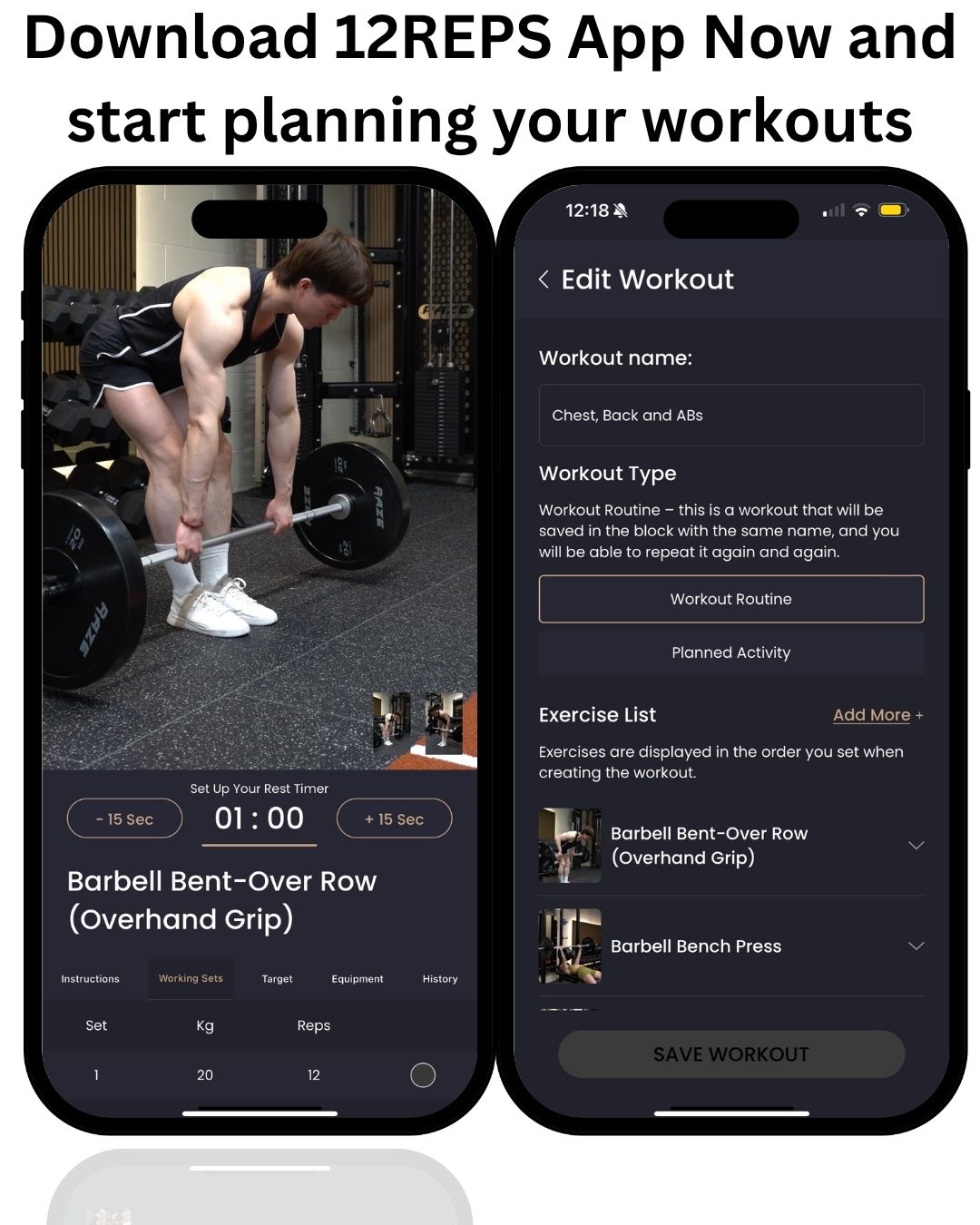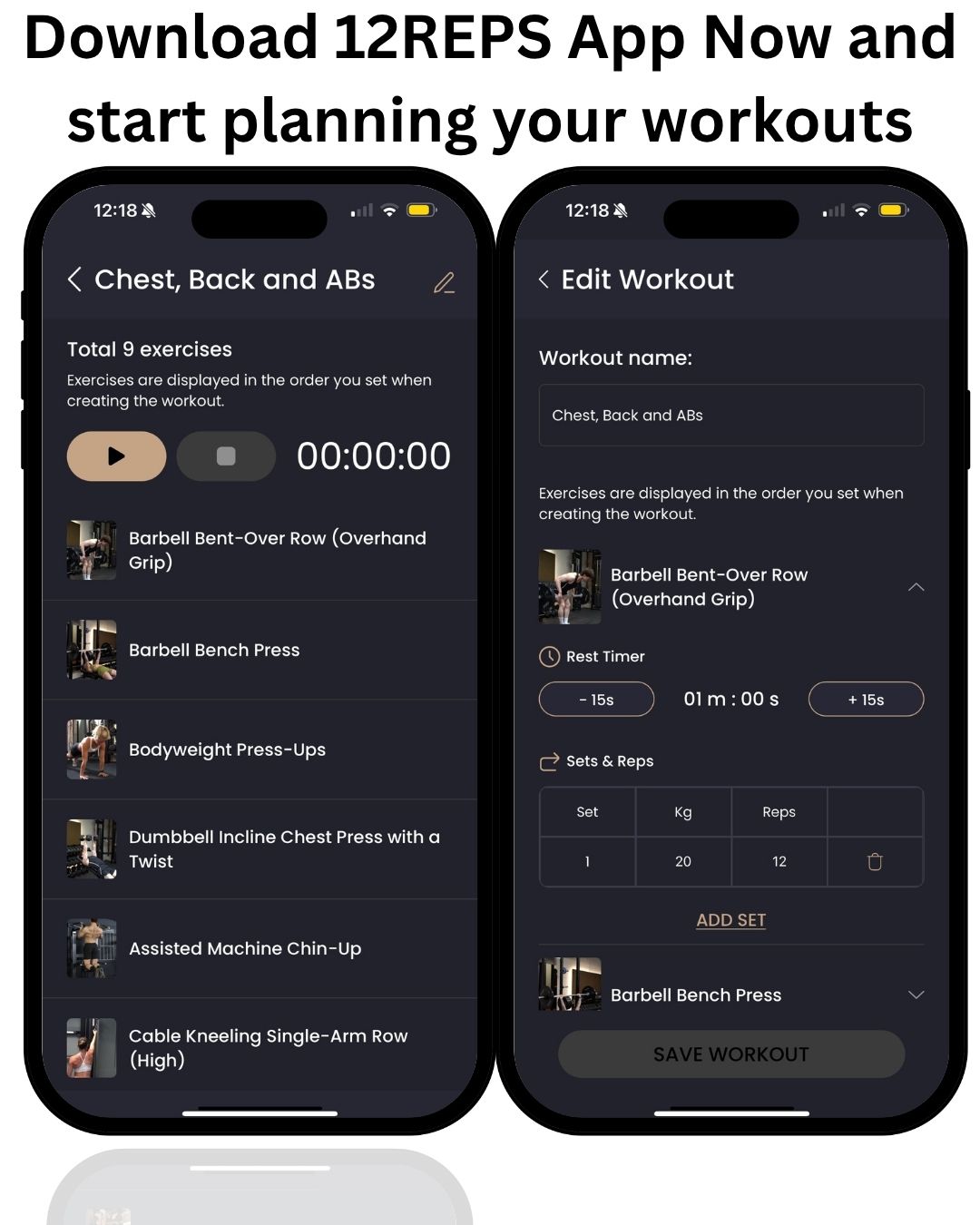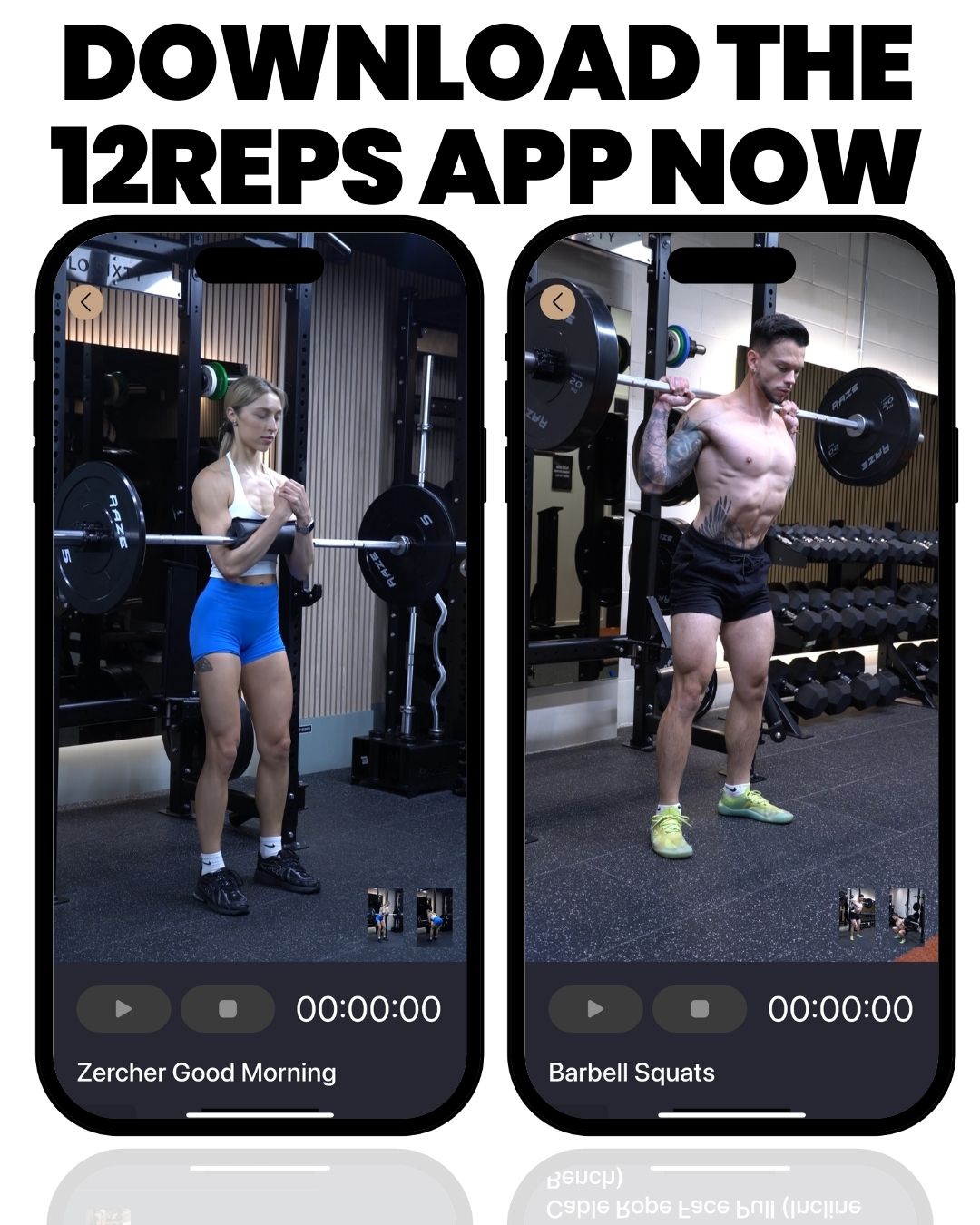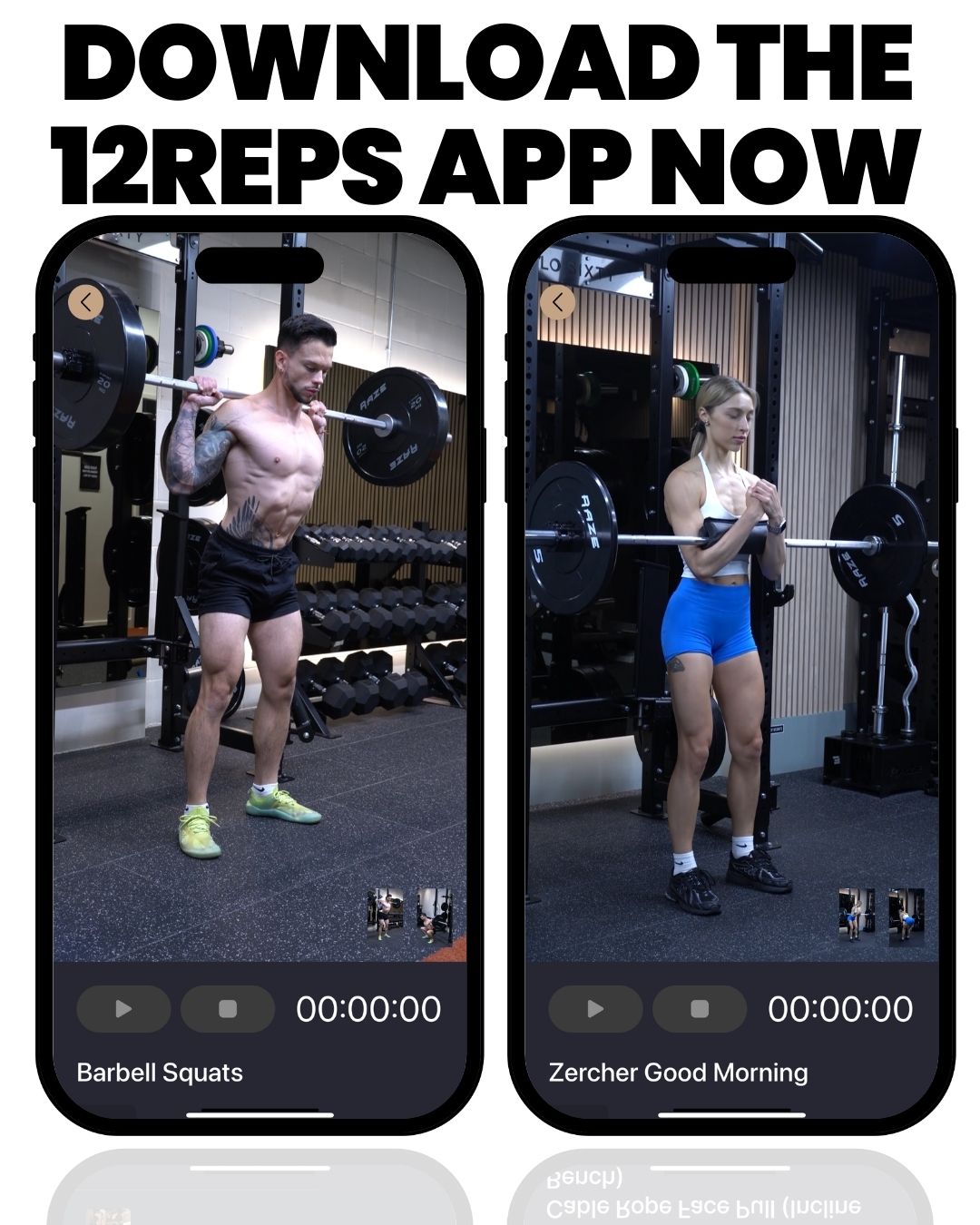Written by Will Duru, BSc (Hons) Sport and Exercise Science, award-winning Personal Trainer with over 10 years of experience in strength training and optimising recovery .
A client came to me the other day and said, “I feel like my body isn’t mine anymore.” I knew exactly what she meant. At 48, Marika had been dealing with hot flashes, weight gain around her middle, and feeling tired all the time. She felt lost and frustrated. Sound familiar?
If you’re going through menopause or perimenopause, you’re not alone. I’ve been a personal trainer for over a decade, and I’ve helped hundreds of women over 35 navigate this challenging time. I have a BSc (Hons) in Sport and Exercise Science, and I understand what’s happening in your body.
Here’s what I want you to know: menopause is not the end of feeling strong and confident. It’s actually a new beginning. With the right approach to strength training, you can feel better than you have in years. You can build muscle, boost your energy, and take control of your health.
This guide will show you exactly how to do it. I’ll give you a simple 12-week plan that works with your body, not against it. All the exercises are available on the 12Reps app, so you’ll have everything you need right at your fingertips.
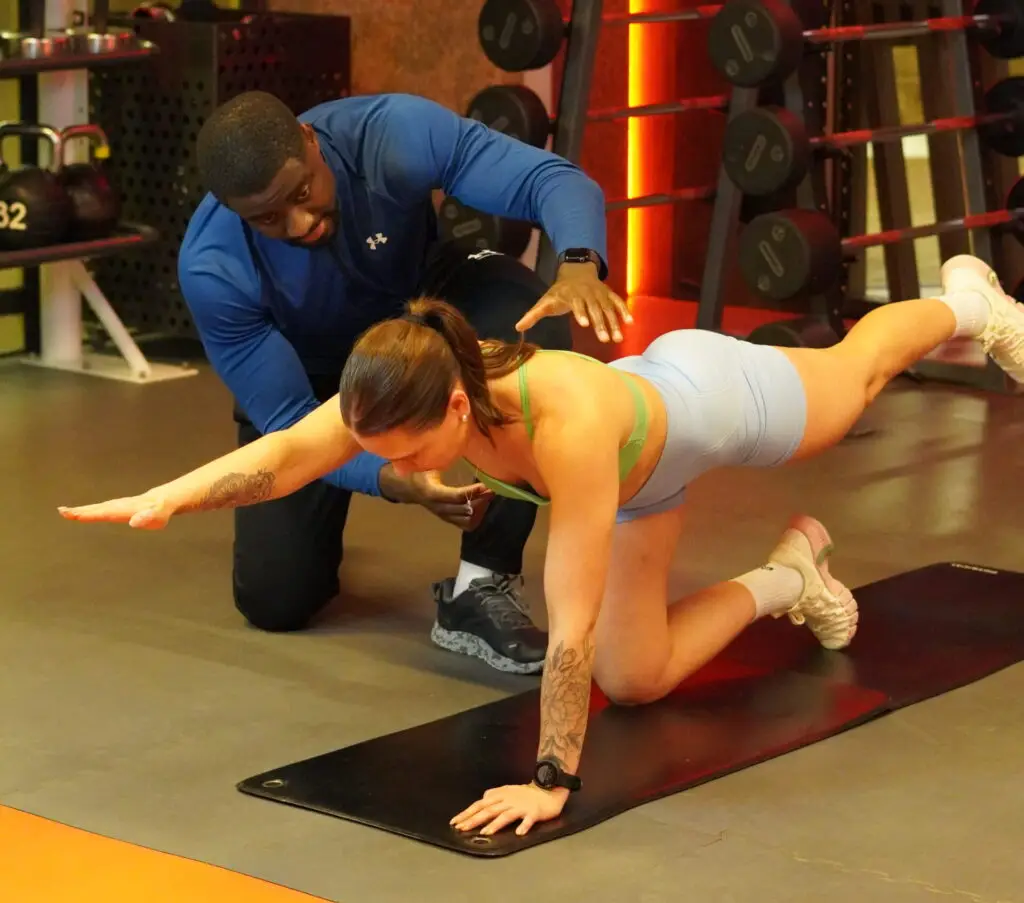
Understanding Your Body During Menopause
It’s Not Just You: The ‘Why’ Behind the Changes
First, let me assure you that what you’re experiencing is entirely normal. Your body is going through massive changes, and it’s not your fault.
The Hormonal Shift
During menopause, your body produces less estrogen and progesterone. These hormones do a lot more than you might think. Estrogen helps keep your muscles strong and your bones healthy. It also helps control where your body stores fat. When estrogen drops, everything changes.
Muscle & Bone Health
Without enough estrogen, you start losing muscle mass faster. This is called sarcopenia. You can lose 3-8% of your muscle mass each decade after age 30, and this speeds up during menopause. Your bones also become weaker because estrogen helps keep them strong.
This is why strength training is so important. It’s the best way to fight muscle loss and keep your bones healthy. Research shows that resistance training can actually reverse muscle loss and make your bones stronger.
Metabolism & Body Composition
Many of my clients tell me they’re eating the same as always but gaining weight, especially around their middle. This happens because muscle burns more calories than fat. When you lose muscle, your metabolism slows down. Plus, lower estrogen makes your body more likely to store fat around your waist.
Energy & Mood
The hormone changes also affect your energy and mood. You might feel tired, have brain fog, or feel more anxious or sad. Sleep problems are common too. Exercise, especially strength training, can help with all of these issues.
I remember working with Maria, a 52-year-old mother of two and a home mum. She came to me feeling exhausted and frustrated. After 12 weeks of consistent strength training, she told me she had more energy than she’d had in years. She was sleeping better and felt like herself again.
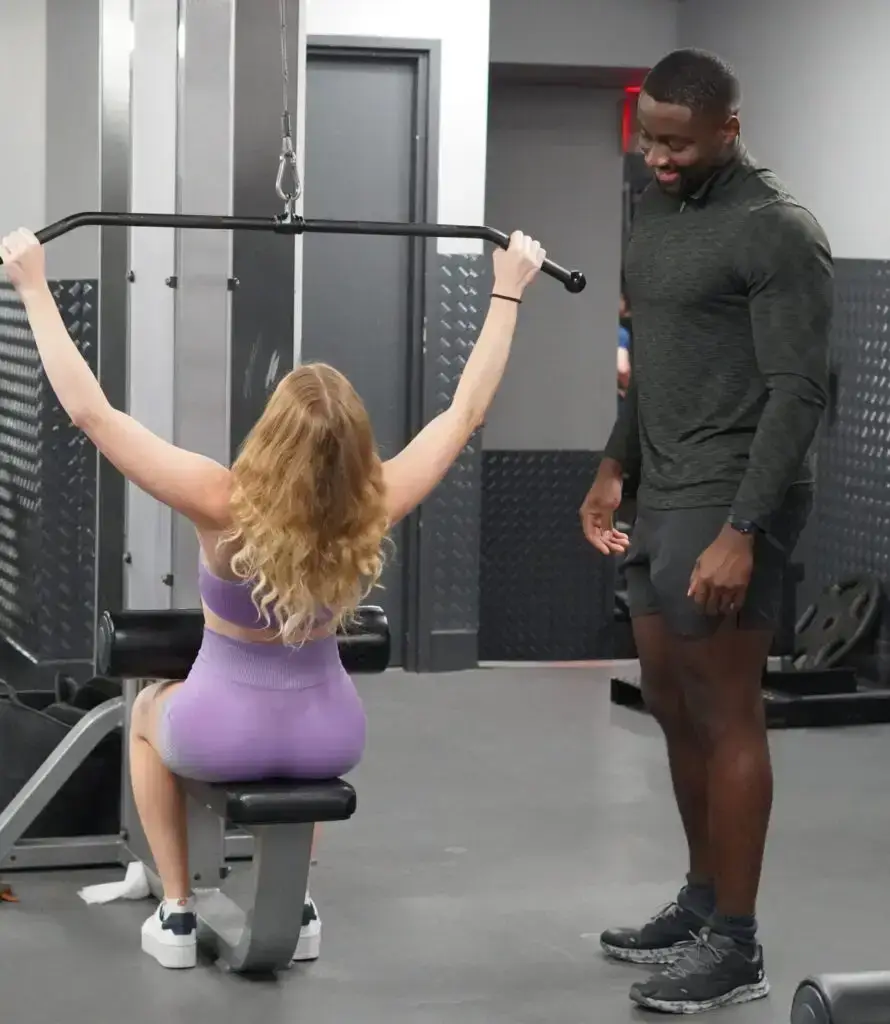
The Menopause Training Philosophy
Your New Rules of Engagement: How We Adapt and Thrive
Training during menopause is different from training in your 20s or 30s. Your body has different needs now, and that’s okay. We need to work with your body, not fight against it.
The Pre-Session Check-in
Before every workout, I ask my clients one simple question: “How do you feel today?” This isn’t just small talk. Your energy, mood, and symptoms can change from day to day. Some days you’ll feel great and ready to push hard. Other days, you might be dealing with a hot flash or feeling tired.
Both are okay. The key is listening to your body and adjusting accordingly.
Managing Heat and Hot Flashes
Hot flashes during exercise are real and can be frustrating. I’ve seen clients suddenly start sweating heavily in the middle of a set. Here’s what we do:
- Dress in layers so you can remove clothes if needed
- Keep a fan nearby or train in a cool room
- Have a cooling towel ready
- Stay hydrated
- I usually pour drips of ice-cold water on the back of the client’s neck to help bring their body temperature back down.
If a hot flash hits during your workout, don’t stop completely. We adjust. Perhaps we switch from heavy deadlifts to using resistance bands instead. Or we take more extended rest periods. The goal is to keep moving in a way that feels good.
Prioritising Recovery
Recovery becomes even more important during menopause. Your body needs more time to repair and rebuild. This means:
- Getting 7-9 hours of sleep each night
- Taking rest days seriously
- Not pushing through pain or extreme fatigue
- Managing stress through relaxation techniques
Consistency Over Intensity
I tell all my clients: showing up and doing something is better than pushing too hard and burning out. If you can only do 15 minutes instead of 30, that’s still a win. If you need to use lighter weights because you’re tired, that’s fine too.
The magic happens with consistency, not perfection.
Celebrating Non-Scale Victories
Forget about the scale for a moment. During menopause, your body composition might change even if your weight stays the same. You might be building muscle and losing fat, which is exactly what we want.
Instead, celebrate these victories, Carrying groceries upstairs without getting winded, Sleeping better at night, Having more energy during the day, Feeling stronger and more confident, Clothes fitting better, Improved mood and less anxiety.
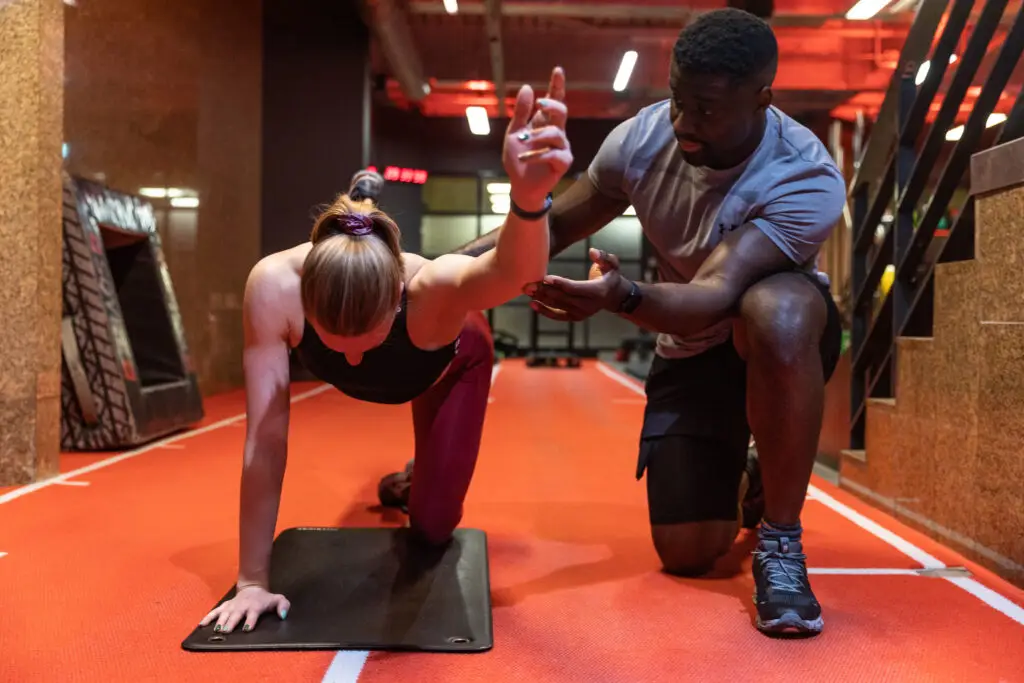
Your 12-Week Progressive Strength Training Plan
Your Step-by-Step Guide to Reclaiming Your Strength (All Exercises on the 12REPS App!)
This plan is specifically designed for women experiencing menopause. It starts slowly and builds gradually. Every exercise I mention is available on the 12Reps app with video demonstrations and clear instructions.
The plan is 3 days per week – Monday, Wednesday, and Friday work well. This gives you rest days in between, which is crucial for recovery.
Phase 1: Building Your Foundation (Weeks 1-4)
Goal: Master basic movements, build confidence, and create a consistent routine.
Equipment: Just your body weight – no equipment needed!
Workout Structure: Full-body, 3 days per week
Exercise | Equipment | Sets | Reps | Notes |
Bodyweight Squats | None | 4 | 10-15 | |
Incline Push-ups | Bench or Step | 3 | 8-12 | |
Glute Bridges | None | 4 | 12-15 | |
Modified Plank | None | 3-4 | 30 seconds | On knees if needed |
Wall Sits | None | 2-3 | 15-30 seconds | |
Reverse Lunges | None | 4 | 10 per leg |
Focus: Perfect your form and listen to your body. If 15 reps feels too easy, do more. If 10 feels challenging, that’s your starting point. The 12Reps app will show you exactly how to do each exercise safely.
Rest 30-60 seconds between sets, or longer if you need it. Remember, this is about building the habit and getting comfortable with movement.
Phase 2: Introducing Weights (Weeks 5-8)
Goal: Add light resistance to build more strength and bone density.
Equipment: Light dumbbells (5-15 lbs) and a kettlebell (8-12 kg)
Workout Structure: Full-body, 3 days per week
Exercise | Equipment | Sets | Reps | Notes |
Goblet Squats | Dumbbell | 3 | 10-12 | Hold dumbbell at chest level |
Dumbbell Rows | Dumbbell | 3 | 8-12 each arm | Single arm or bent-over rows |
Dumbbell Chest Press | Dumbbell | 3 | 8-12 | Can be done on bench or floor |
Romanian Deadlifts | Dumbbell | 3 | 10-12 | Focus on hip hinge movement |
Kettlebell Swings | Kettlebell | 3 | 10-15 | Start with light weight |
Focus: Keep perfect form as you add weight. Start with lighter weights than you think you need. You can always increase the weight next week. The 12Reps app will guide you through proper form for each exercise.
Rest 60-90 seconds between sets. Pay attention to how you feel and adjust as needed.
Phase 3: Gaining Strength and Confidence (Weeks 9-12)
Goal: Feel noticeably stronger, more confident with weights, and ready to continue your journey.
Equipment: Moderate dumbbells and kettlebells
Workout Structure: Full-body, 3 days per week
Exercise | Equipment | Sets | Reps | Notes |
Dumbbell Squats | Dumbbell | 3-4 | 8-10 | |
Dumbbell Overhead Press | Dumbbell | 3-4 | 6-10 | |
Kettlebell Romanian Deadlifts | Kettlebell | 3-4 | 8-10 | |
Push-ups | None | 3-4 | 5-12 | Progressing towards full push-ups |
Plank Variations | None | 3-4 | 30-60 seconds | |
Dumbbell Walking Lunges | Dumbbell | 3 | 16 | |
Dumbbell Hip Thrust | Dumbbell | 3 | 20 | |
Dumbbell Farmer’s Carry | Dumbbell | 3 | 30-second walk |
Focus: Challenge yourself with slightly heavier weights or more reps, but always prioritise form and how you feel that day. Some days you’ll feel strong and can push harder. Other days, you might need to back off a bit. Both are perfectly fine.
The 12Reps app tracks your progress, so you can see how much stronger you’re getting over time.
Important Notes for All Phases:
- Warm up for 5-10 minutes before each workout with light movement
- Cool down with gentle stretching for 5-10 minutes after each workout
- If you miss a day, don’t try to make it up by doing extra the next day
- Progress at your own pace – some people might need to stay in Phase 1 for longer
- Listen to your body above all else

Fueling Your Body Through Menopause
Nutrition to Support Your Strength and Well-being
Good nutrition becomes even more important during menopause. Your body needs the right fuel to build muscle, maintain bone health, and manage symptoms.
Protein is Paramount
As you age and go through menopause, you need more protein to maintain and build muscle. Aim for 1.2-1.6 grams of protein per kilogram of body weight. For a 70kg woman, that’s about 84-112 grams per day.
Good protein sources include, Lean meats, fish, and poultry – Eggs, Greek yogurt, Beans and lentils – Nuts and seeds
Calcium & Vitamin D
Your bones need extra support during menopause. Aim for 1,200mg of calcium and 800-1,000 IU of vitamin D daily. Good sources include dairy products, leafy greens, and fortified foods. Consider supplements if you’re not getting enough from food.
Phytoestrogens
Some foods contain natural compounds that act like weak estrogens in your body. These might help with menopausal symptoms. Try adding soy products, flaxseeds, and legumes to your diet.
Hydration
Staying hydrated is crucial, especially if you’re dealing with hot flashes. Aim for 8-10 glasses of water per day. This also helps with energy levels and recovery from exercise.
Remember, the 12Reps app focuses on training, but you can find detailed nutrition guides on our blog at just12reps.com.
Conclusion
Menopause is not an ending, it’s a new chapter where you can be stronger than ever. Yes, your body is changing, but that doesn’t mean you have to accept feeling weak, tired, or out of control.
Strength training is your secret weapon. It fights muscle loss, strengthens your bones, boosts your metabolism, and improves your mood and energy. The 12-week plan I’ve given you is just the beginning. Once you complete it, you’ll have the knowledge and confidence to continue your strength journey.
Remember these key points, Listen to your body every day, Consistency beats perfection, Celebrate non-scale victories – Work with your body, not against it, You’re stronger than you think
Start today. Download the 12Reps app, begin with Phase 1, and take the first step towards feeling strong, confident, and energised again. Your future self will thank you.
You’ve got this. I believe in you.
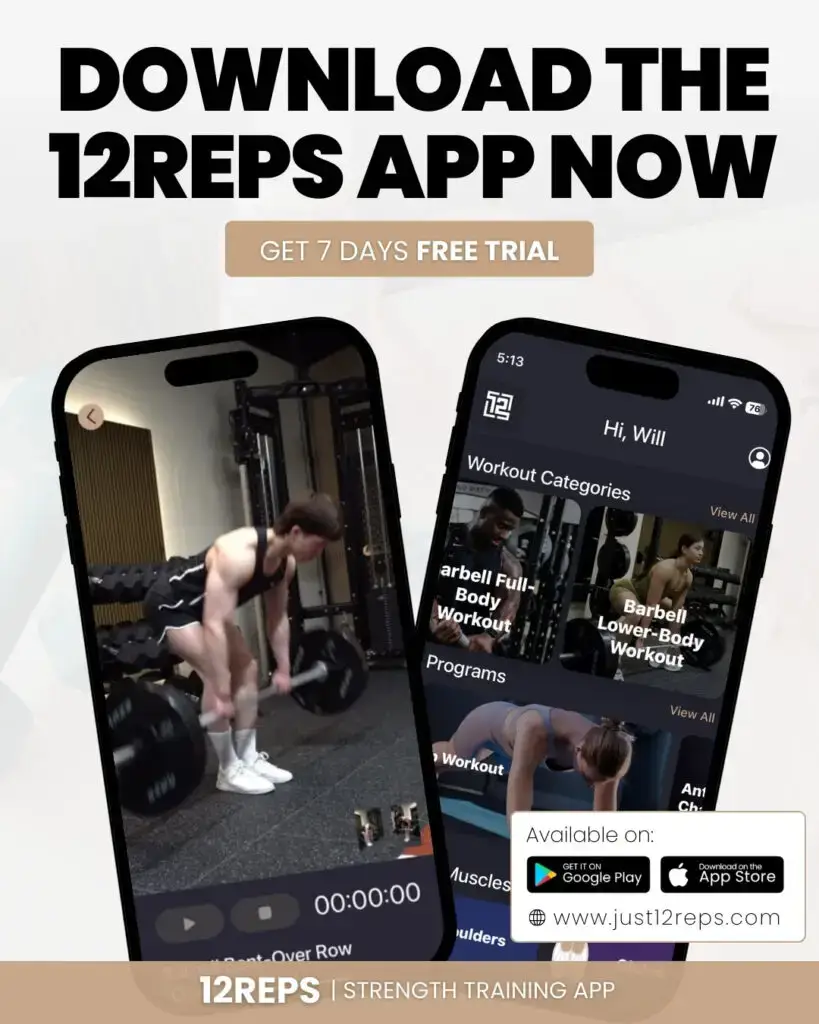
Disclaimer: This article is for educational purposes only and is not intended as medical advice. Please consult with your healthcare provider before starting any new exercise program, especially if you have any health conditions or concerns.
About the Author
Written by Will Duru, BSc (Hons) Sport and Exercise Science, Level 3 Personal Trainer. Will has over a decade of experience training women and is passionate about helping them navigate menopause with strength and confidence. He is also the founder of the 12Reps app.
References:
- 1. Maltais, M. L., Desroches, J., & Dionne, I. J. (2009). Changes in muscle mass and strength after menopause. Journal of Musculoskeletal and Neuronal Interactions, 9(4), 186-197.
- 2. Ronkainen, P. H., Kovanen, V., Alen, M., et al. (2009). Postmenopausal hormone replacement therapy modifies skeletal muscle composition and function. Journal of Applied Physiology, 107(3), 839-846.
- 3. Sipilä, S., & Suominen, H. (1995). Effects of strength and endurance training on thigh and leg muscle mass and composition in elderly women. Journal of Applied Physiology, 78(1), 334-340.

